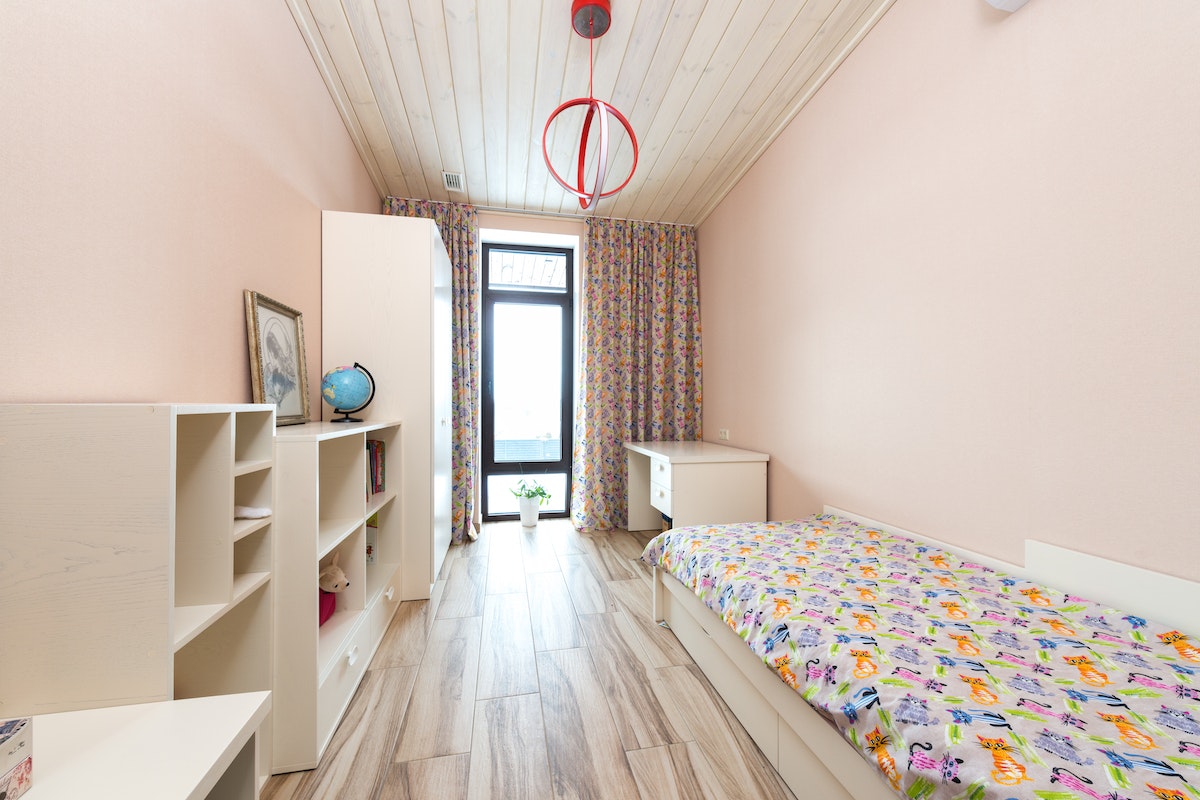Welcome to our comprehensive guide on single-family homes, one of the most popular types of residential properties. In this article, we will explore the various aspects of single-family homes, including their definition, benefits, factors to consider when buying, the home buying process, maintenance tips, and their role in the real estate market. Whether you’re a first-time homebuyer or looking to upgrade your current living situation, this guide will provide you with valuable insights and help you make informed decisions throughout your homeownership journey.
What are Single-Family Homes?
Definition and Characteristics
Single-family homes are standalone properties designed to accommodate a single household. They offer a distinct sense of privacy and independence compared to other types of residential properties. Typically, these homes are situated on their own land and do not share walls or common spaces with neighboring units. They come in various architectural styles, sizes, and layouts, catering to diverse preferences and needs.
Benefits of Single-Family Homes
Privacy and Space
Single-family homes provide a higher degree of privacy, allowing residents to enjoy their personal space without the proximity of shared walls or living areas. The ample space within these homes offers room for growth, both in terms of living arrangements and accommodating individual lifestyles.
Yard and Outdoor Areas
One of the significant advantages of single-family homes is the availability of a private yard or outdoor area. This space allows homeowners to create beautiful gardens, engage in outdoor activities, host gatherings, or simply relax in a serene environment.
Customization and Personalization
Owning a single-family home provides the freedom to customize and personalize the living space to suit individual preferences. From interior design choices to renovations and modifications, homeowners have the flexibility to create a home that reflects their unique style and meets their specific needs.
Ownership and Investment Potential
Investing in a single-family home offers long-term financial benefits. As a homeowner, you have the opportunity to build equity over time, which can contribute to your overall wealth. Additionally, single-family homes generally appreciate in value, making them a valuable asset in the real estate market.
Factors to Consider When Buying a Single-Family Home
Location and Neighborhood
Choosing the right location for your single-family home is crucial. Factors such as proximity to schools, workplaces, amenities, and transportation options should be considered. Evaluating the neighborhood’s safety, community atmosphere, and future development plans will help you make an informed decision.
Size and Layout
Determining the appropriate size and layout depends on your current and future needs. Consider the number of bedrooms, bathrooms, and living spaces required for your household. Assessing the functionality and flow of the floor plan is essential to ensure your new home meets your lifestyle requirements.
Maintenance and Upkeep
Owning a single-family home involves maintenance responsibilities. Understand the maintenance tasks, such as regular cleaning, landscaping, and repairs, to keep your home in good condition. Budgeting for these expenses and considering the time commitment required is essential for homeownership success.
Affordability and Financing
Assessing your financial situation and determining the affordability of a single-family home is crucial. Establish a budget, including considerations for down payment, mortgage payments, property taxes, and homeowners’ insurance. Exploring financing options and getting pre-approved for a mortgage will help streamline the home buying process.
Resale Value and Market Trends
Understanding the resale value of single-family homes is essential, even if you plan to stay in your home for the long term. Stay informed about market trends, pricing dynamics, and potential growth in the area. This knowledge will help you make a sound investment and assess the potential for future appreciation.

How to Buy a Single-Family Home
Preparing for the Home Buying Process
Assessing Your Priorities and Needs
- Understand your lifestyle, preferences, and specific requirements when it comes to buying a single-family home.
- Consider factors such as commute distance, nearby amenities, school districts, and future plans.
Evaluating Your Financial Situation
- Review your finances, including savings, credit score, and debt-to-income ratio.
- Determine your budget and calculate how much you can comfortably afford for a single-family home.
Obtaining Mortgage Pre-approval
- Contact lenders and get pre-approved for a mortgage to determine your borrowing capacity.
- This step helps streamline the home search and shows sellers that you are a serious buyer.
Searching for Single-Family Homes
Engaging a Real Estate Agent
- Seek the assistance of a qualified real estate agent who specializes in single-family homes.
- An experienced agent can guide you through the process, provide valuable insights, and help you find suitable properties.
Online Listings and Home Search Platforms
- Utilize online resources such as real estate websites and mobile applications to search for available single-family homes.
- Refine your search based on location, price range, size, and other specific criteria.
Visiting Open Houses and Scheduling Viewings
- Attend open houses and schedule viewings of single-family homes that meet your criteria.
- Take notes, ask questions, and assess each property’s condition, layout, and suitability for your needs.
Making an Offer and Closing the Deal
Making a Competitive Offer
- Work with your real estate agent to determine a competitive offer price based on market conditions and the property’s value.
- Craft an offer that includes necessary contingencies and negotiate with the seller if needed.
Home Inspection and Appraisal
- Conduct a home inspection to identify any potential issues or necessary repairs.
- Appraise the property to ensure its value aligns with the agreed-upon purchase price.
Finalizing the Purchase
- Work with your lender to secure your mortgage and finalize all necessary paperwork.
- Complete the closing process, including signing the purchase agreement, transferring funds, and obtaining homeowners’ insurance.
Maintaining and Enjoying Your Single-Family Home
Homeownership Responsibilities
Regular Cleaning and Maintenance
- Develop a cleaning routine to keep your home tidy and organized.
- Perform regular maintenance tasks, such as HVAC system inspections, gutter cleaning, and pest control.
Landscaping and Outdoor Care
- Maintain your yard by mowing the lawn, trimming shrubs, and tending to garden beds.
- Consider seasonal landscaping tasks and invest in outdoor maintenance equipment if necessary.
Home Security and Safety Measures
- Implement security measures, such as installing alarm systems, motion sensor lighting, and secure locks.
- Regularly check and maintain smoke detectors, carbon monoxide detectors, and fire extinguishers.
Creating a Comfortable Living Environment
Interior Design and Personalization
- Decorate your single-family home to reflect your personal style and create a warm, inviting atmosphere.
- Experiment with different color schemes, furniture arrangements, and decorative elements.
Energy Efficiency and Sustainability
- Adopt energy-efficient practices, such as using LED light bulbs, installing programmable thermostats, and optimizing insulation.
- Consider sustainable options when upgrading appliances, choosing materials, and implementing water-saving measures.
Outdoor Living Spaces and Recreation
- Make the most of your outdoor area by creating functional and inviting spaces.
- Install a patio or deck, set up outdoor furniture, and incorporate elements like a barbecue grill or fire pit for entertaining and relaxation.

The Role of Single-Family Homes in the Real Estate Market
Market Demand and Trends
Homeownership as a Financial Goal
- Explore the reasons why owning a single-family home is a common financial goal for many individuals and families.
- Discuss the potential long-term benefits and stability associated with homeownership.
Impact of Economic Factors
- Analyze how economic factors, such as interest rates, employment rates, and housing market trends, influence the demand for single-family homes.
- Examine the role of supply and demand dynamics in shaping property values.
Real Estate Investment Considerations
Building Equity and Wealth
- Explain how homeownership can contribute to building equity and accumulating wealth over time.
- Discuss strategies for leveraging home equity, such as refinancing or utilizing home equity loans.
Rental Opportunities and Income Potential
- Explore the possibility of renting out a single-family home as an additional income stream.
- Highlight the benefits and considerations of becoming a landlord.
Conclusion
Single-family homes offer a unique living experience characterized by privacy, space, and homeownership advantages. By considering various factors during the home buying process and maintaining your property effectively, you can enjoy the benefits of owning a single-family home while building equity and creating a comfortable living environment. As you embark on your journey to homeownership, use this comprehensive guide as a valuable resource to navigate the process successfully and make informed decisions that align with your needs and aspirations.
- Pro’s and Con’s Of Owning an Oceanfront Condo - July 20, 2023
- The Intersection of Real Estate and Homeowners Insurance in Orlando and Florida - July 3, 2023
- Refinancing Your Mortgage: A Guide to Considerations and Options - June 29, 2023
